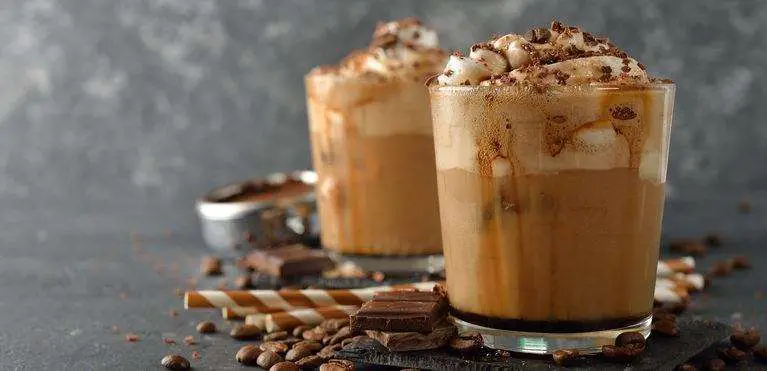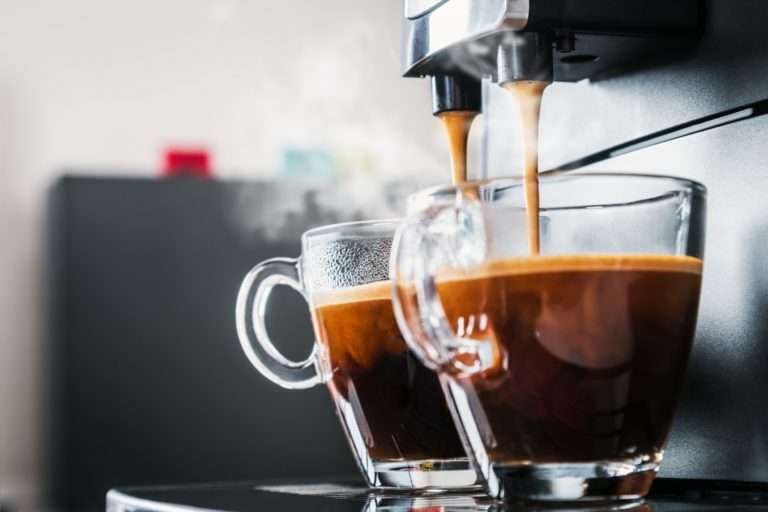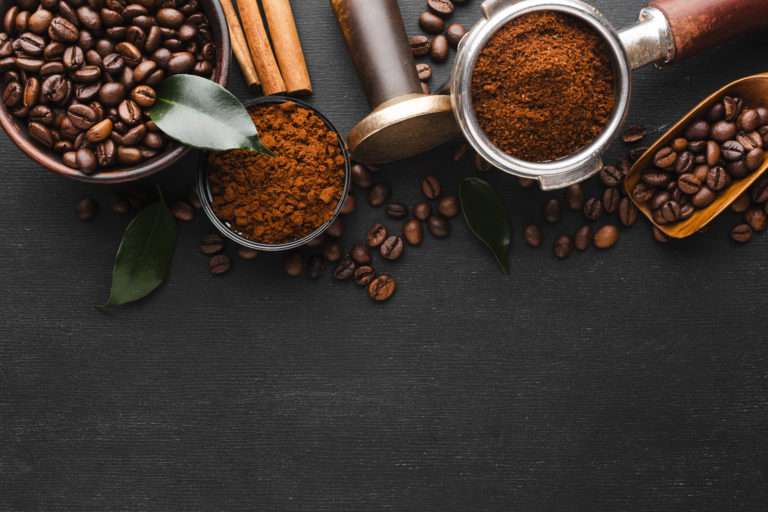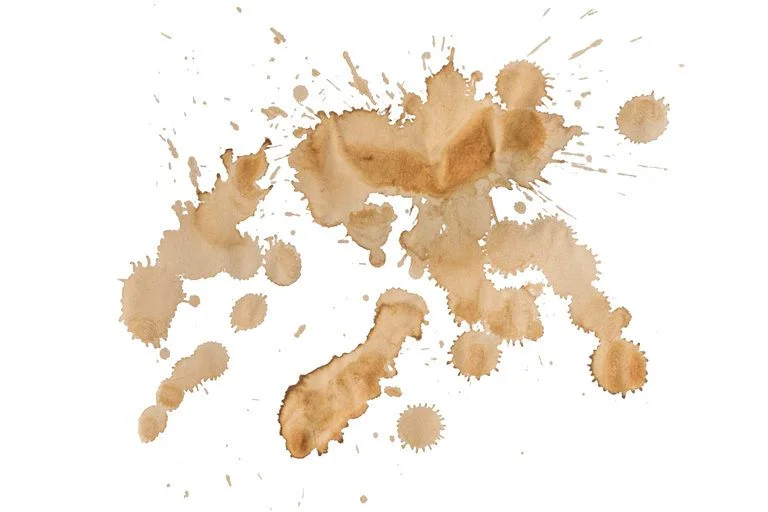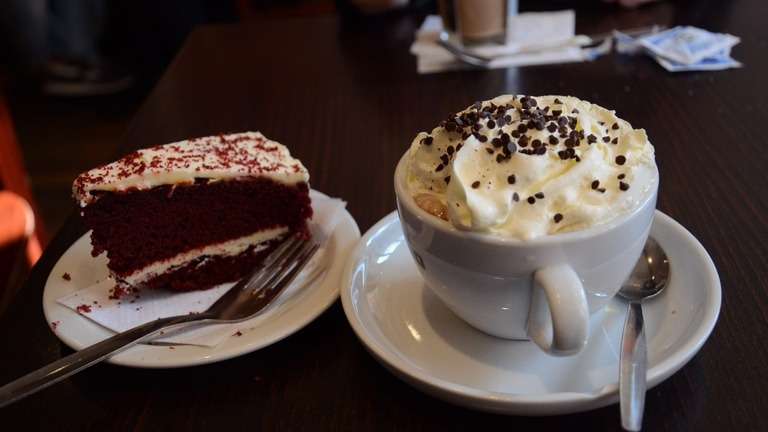How to Make Iced Coffee Like a Barista?
Iced coffee is more than a drink. It’s an art. What makes iced coffee so good? It’s all about the brew and the beans.
A perfect iced coffee is a mix of careful prep and a deep understanding of coffee flavors. Baristas are the artists of this drink. They have the skills.
They know how to make iced coffee. They bring out coffee’s best through their methods. In this guide, we’ll share the secrets.
You’ll learn the steps on how to make iced coffee like a barista. Get ready to make this amazing drink at home.
Why Making Iced Coffee Like a Barista Matters
But why should you learn how to make iced coffee like a barista? Well, there’s a reason why iced coffee made by a barista tastes so much better. Baristas understand the science behind coffee brewing.
They know how to make iced coffee taste like a latte, how to use a coffee maker to its full potential, and how to create that perfect coffee without a machine. Can you make iced coffee in a coffee maker?
Absolutely! But knowing the barista’s secrets can elevate your homemade iced coffee to the next level. Plus, understanding how long iced coffee can stay in the fridge and how long it is good for after opening ensures that every sip is as fresh and flavorful as possible.
Now, let’s dive into the art of making iced coffee at home, and uncover the secrets that make a barista’s iced coffee so special.
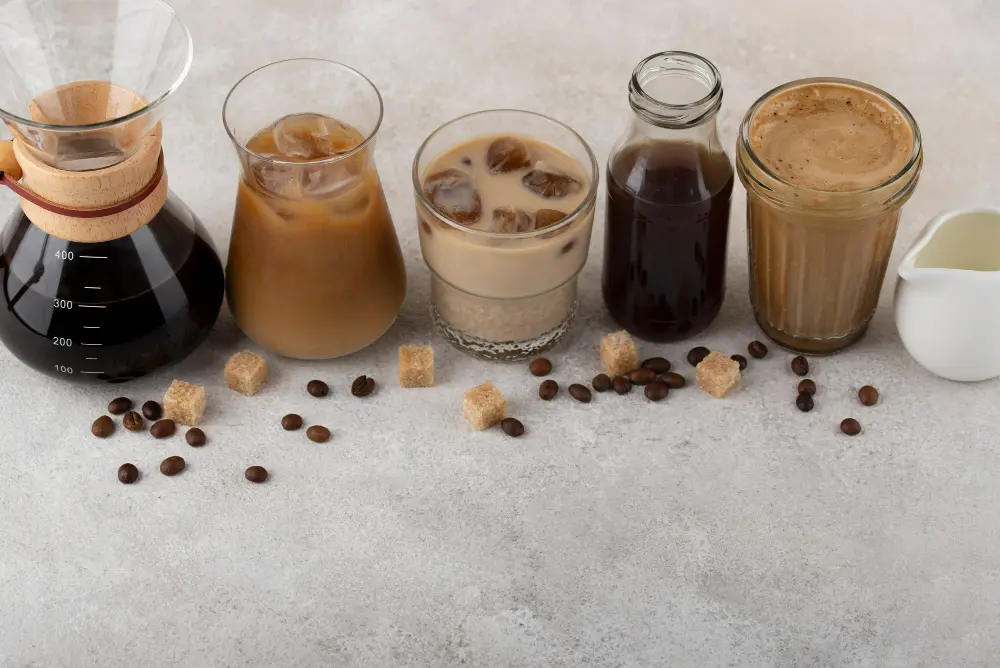
Understanding Coffee Beans
Before we delve into the process of making iced coffee, it’s essential to understand the foundation of any great coffee – the coffee beans. The quality and type of coffee beans you use can make or break your iced coffee experience.
The Different Types of Coffee Beans
There are several types of coffee beans, each with its unique characteristics. The four main types are Arabica, Robusta, Liberica, and Excelsa. Arabica beans are known for their sweet, soft taste and higher acidity.
Robusta beans have a stronger, more bitter flavor compared to Arabica and are often used in espresso blends. Liberica beans have a somewhat woody or smoky taste, while Excelsa, often used in blends, offers tart, fruity profile characteristics.
How the Origin of Coffee Beans Affects Flavor
The origin of coffee beans is another crucial factor that affects the flavor. Coffee beans from different parts of the world have distinct taste profiles influenced by the climate, soil, and altitude of where they are grown.
For instance, Latin American coffee beans are known for their light body and sharp acidity, often with a nutty or chocolatey flavor. African coffee beans, on the other hand, tend to have fruity and floral notes, while Asian coffee beans are often full-bodied with earthy or spicy flavors.
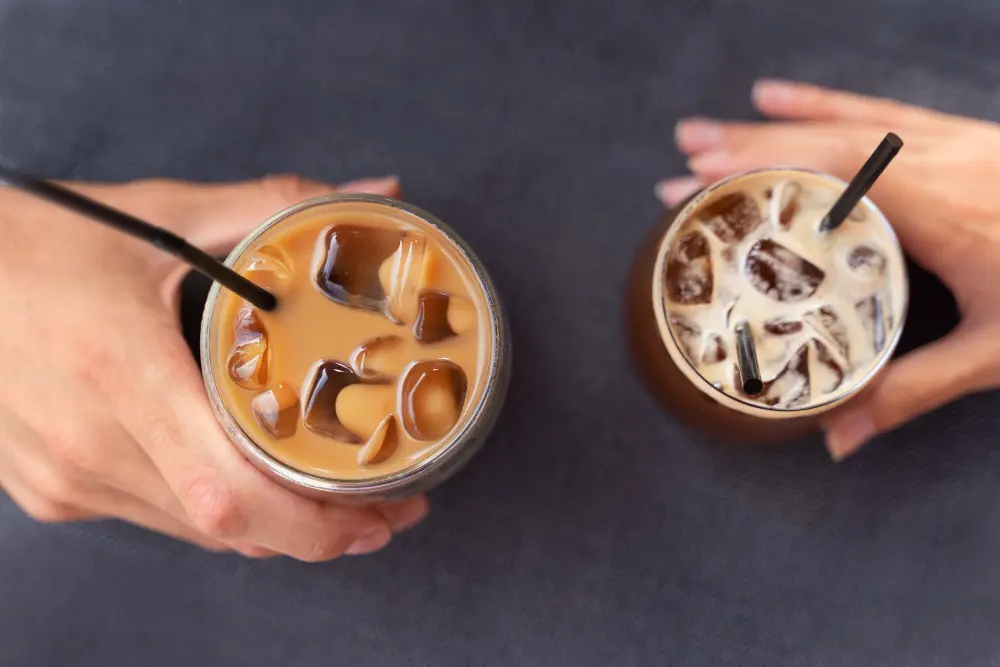
Selecting the Perfect Beans for Iced Coffee
When it comes to making iced coffee like a barista, selecting the perfect beans is paramount. So, how do baristas make iced coffee with such rich flavors? They choose beans that have a balanced flavor profile that can shine through even when chilled.
For iced coffee, beans with a medium to dark roast are often preferred as they have a more robust flavor that pairs well with the cold temperature. Additionally, consider experimenting with single-origin beans to find a unique flavor that you love.
Now that you have a better understanding of coffee beans and how to select the perfect ones for your iced coffee, let’s move on to the brewing techniques that will make your iced coffee taste like a latte made by a professional barista.
Tools of the Trade
To make iced coffee like a barista, you need the right tools. The equipment you use can significantly impact the quality of your iced coffee.
Essential Equipment for Making Iced Coffee
The essential equipment for making iced coffee includes a good coffee maker and a coffee grinder. You might wonder, “Can you make iced coffee in a coffee maker?” The answer is yes! A coffee maker is a versatile tool that can be used to brew both hot and cold coffee.
How do baristas make iced coffee using a coffee maker? They start by brewing a strong pot of coffee because the coffee will be diluted when it’s chilled and served over ice. If you don’t have a coffee maker, don’t worry.
You can learn how to make iced coffee at home without a machine by using methods like cold brewing or the Japanese iced coffee method.
The Importance of a Good Coffee Grinder
A good coffee grinder is another essential tool for making iced coffee. How do baristas make iced coffee with such consistent flavor? One of their secrets is grinding the coffee beans right before brewing. This ensures the freshest taste as coffee grounds start to lose flavor as soon as they’re exposed to air.
When choosing a coffee grinder, look for one that offers different grind settings. For iced coffee, a medium to coarse grind is usually recommended. This is because a coarse grind allows for a slower extraction rate, which is ideal for cold brewing.
The Role of Filters in Brewing
Finally, let’s talk about the role of filters in brewing. Filters are crucial in determining the texture and clarity of your iced coffee.
Paper filters result in a clean cup of coffee by filtering out most of the coffee oils and fine particles. Metal filters, on the other hand, allow more oils and fine particles to pass through, resulting in a fuller-bodied coffee.
How do baristas make iced coffee that’s clear and not cloudy? They often use paper filters, especially when using the drip brewing method. However, if you prefer a more robust and full-bodied iced coffee, you might want to experiment with metal filters.
Now that we’ve covered the tools of the trade, let’s move on to the actual brewing techniques that will help you make iced coffee like a barista.
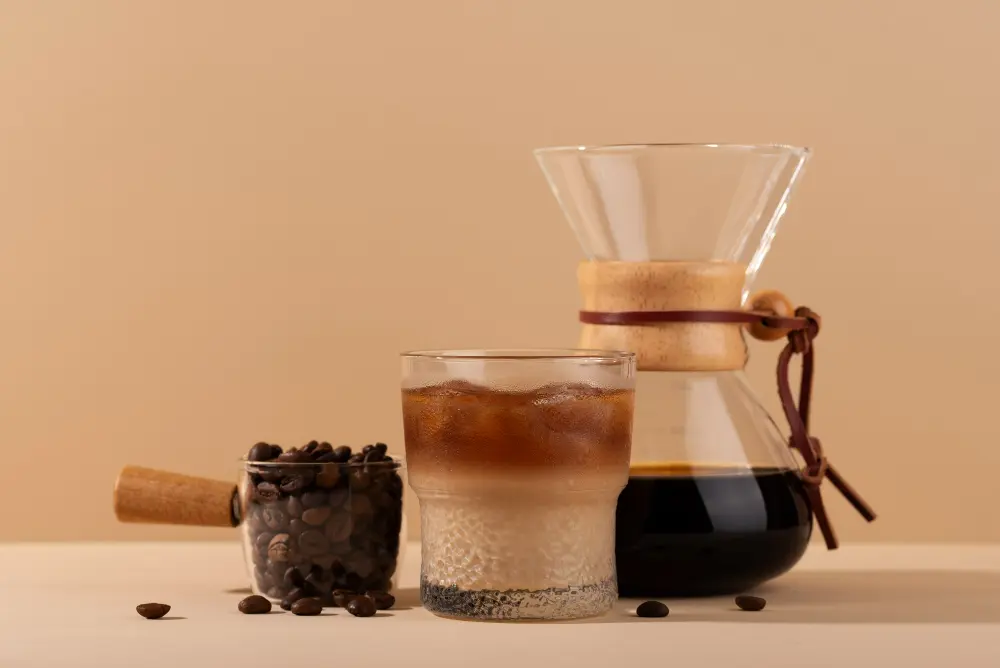
The Brewing Process
Having the right tools is just the beginning. To make iced coffee like a barista Understanding the brewing process is essential.
This section will delve into the science behind brewing coffee, the difference between hot brew and cold brew, and various brewing techniques to achieve the perfect iced coffee.
The Science Behind Brewing Coffee
At its core, brewing coffee is a science. It involves extracting the flavors and compounds from coffee grounds using water.
How do baristas make iced coffee with such a rich and complex flavor profile? They understand the variables involved in the brewing process, such as grind size, water temperature, and brewing time, and how these factors affect the extraction.
Hot Brew vs. Cold Brew: What’s the Difference?
One of the first decisions you need to make when brewing coffee is whether to use hot or cold water. So, what’s the difference?
Hot Brew involves brewing coffee with hot water. This method extracts the flavors and aromas from the coffee quickly, resulting in a vibrant and aromatic cup of coffee. However, because hot water extracts more of the bitter compounds, hot brewed coffee can sometimes taste more bitter compared to cold brew.
Cold Brew on the other hand, involves steeping coffee grounds in cold water for an extended period (usually 12-24 hours).
This method extracts flavors slowly and results in a smooth, sweet, and full-bodied coffee. Cold brew is often less acidic and less bitter than hot brewed coffee.
Brewing Techniques for the Perfect Iced Coffee
Hot Brewing Techniques
The Classic Drip Method
How do baristas utilize the classic drip method to make iced coffee? This method involves brewing coffee by dripping hot water over coffee grounds, allowing the water to pass through the grounds and a filter.
For iced coffee, it’s best to brew the coffee at double strength as it will be diluted with ice. Once brewed, simply pour the hot coffee over a glass full of ice.
The Pour-Over Technique
The pour-over technique gives you more control over the brewing process. It involves manually pouring hot water over coffee grounds in a circular motion.
This method is great for making iced coffee as it allows for a clean and flavorful brew. Similar to the classic drip method, brew the coffee at double strength and pour it over ice.
The AeroPress Method
The AeroPress is a device that allows for a quick and smooth brewing process. To make iced coffee like a barista using the AeroPress, use a fine grind and a short brewing time. After pressing, immediately pour the coffee over ice to cool it down and lock in the flavors.
Now that you are equipped with the knowledge of the brewing process and techniques, you are well on your way to making the perfect iced coffee just like a barista.
Cold Brewing Techniques
While hot brewing techniques are great for making iced coffee, cold brewing techniques offer a unique flavor profile that many coffee lovers adore. Cold brew is often smoother and less acidic than hot brewed coffee, making it perfect for iced coffee.
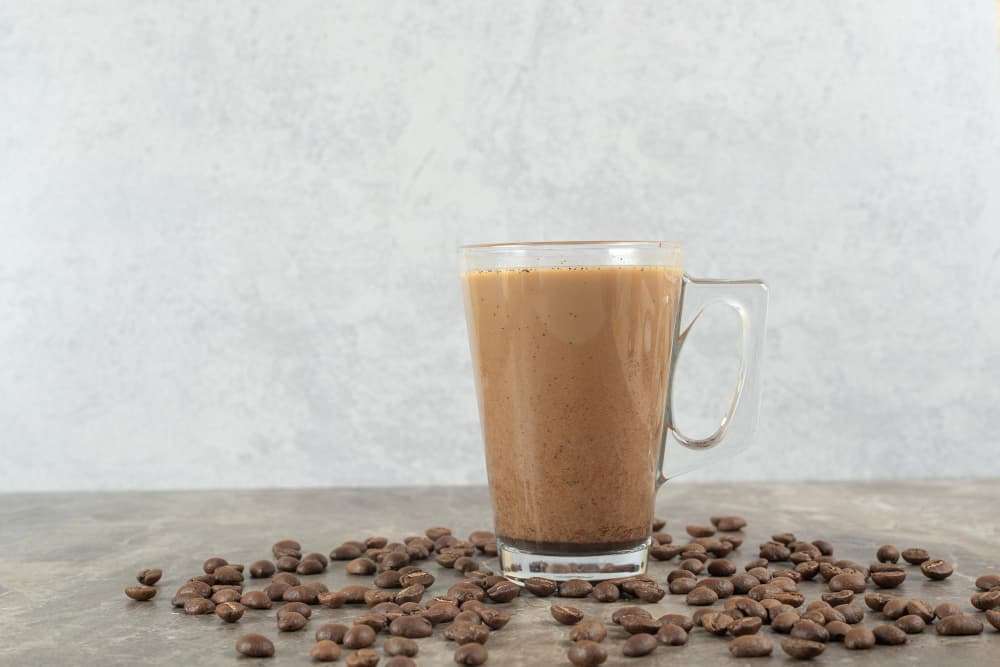
The Immersion Cold Brew Method
The immersion cold brew method is the most common way to make cold brew coffee. It involves immersing coffee grounds in cold water and letting them steep for 12-24 hours. After steeping, the coffee is filtered to remove the grounds.
The result is a concentrated coffee that can be diluted with water or milk and served over ice. This method is simple and straightforward, making it a great option for making iced coffee at home.
The Slow Drip Cold Brew Method
The slow drip cold brew method, also known as the Kyoto-style cold brew, is a bit more complex. It involves dripping cold water onto coffee grounds over several hours.
The water slowly extracts the flavors from the coffee, resulting in a delicate and nuanced brew. This method requires special equipment and more time, but the unique flavor profile it produces might be worth the extra effort.
The Art of Icing
Now that we’ve covered the brewing techniques, let’s talk about the art of icing. After all, iced coffee wouldn’t be iced coffee without the ice!
Why Ice Quality Matters
The quality of the ice you use in your iced coffee can significantly impact the taste. Using regular tap water for your ice can introduce unwanted flavors to your coffee. Instead, consider using filtered water or even coffee to make your ice cubes.
Making Coffee Ice Cubes
How do baristas make iced coffee that doesn’t get watered down as the ice melts? One of their secrets is using coffee ice cubes. Simply pour some of your cold brew coffee into an ice cube tray and freeze. These coffee ice cubes will chill your iced coffee without diluting the flavor as they melt.
The Perfect Coffee-to-Ice Ratio
Finding the perfect coffee-to-ice ratio is key to making delicious iced coffee. A good starting point is to fill your glass with ice, then pour the brewed coffee until it’s about 2/3 full. You can then add more ice or coffee to adjust to your taste.
With these cold brewing techniques and icing tips, you’re well on your way to mastering the art of making iced coffee like a barista.
Customizing Your Iced Coffee
Now that you’ve mastered the brewing process and the art of icing, it’s time to get creative and customize your iced coffee to suit your taste preferences.
How do baristas make iced coffee that’s not only delicious but also unique and exciting? They experiment with coffee concentrations, add flavors and sweeteners, choose the right dairy or non-dairy options, and pay attention to presentation.
Experimenting with Coffee Concentrations
The concentration of your coffee can greatly affect the taste of your iced coffee. If you prefer a strong, bold flavor, you might want to use a higher coffee-to-water ratio during the brewing process.
If you like a lighter, more refreshing taste, you can use a lower ratio or dilute the coffee with more water or milk.
Adding Flavors and Sweeteners
Adding flavors and sweeteners is a great way to make your iced coffee more exciting. You can add classic flavors like vanilla or caramel, or experiment with more unique flavors like lavender or coconut. Sweeteners like sugar, honey, or agave syrup can also be added to enhance the sweetness of your iced coffee.
Dairy and Non-Dairy Options for Creaminess
The choice of dairy or non-dairy options can add creaminess to your iced coffee. Traditional options include milk and cream, but non-dairy alternatives like almond milk, coconut milk, or oat milk are also popular choices for those looking for a different taste or have dietary restrictions.
Presentation Matters
Choosing the Right Glassware
The glassware you choose can enhance the experience of enjoying your iced coffee. A tall, slender glass often makes the iced coffee look more elegant, while a short, wide glass gives it a more casual feel.
Garnishing Your Iced Coffee
Garnishes are not just for decoration; they can also add flavor and aroma to your iced coffee. Consider garnishing your iced coffee with a sprinkle of cocoa powder, a cinnamon stick, or even a sprig of mint.
Serving Iced Coffee Like a Pro
Finally, serving your iced coffee like a pro involves paying attention to the details. Make sure your glass is chilled, add the ice and coffee in the right order, and serve with a straw or a long spoon for stirring.
By customizing your iced coffee and paying attention to presentation, you can create a beverage that’s not only delicious but also a feast for the eyes.
Barista Secrets
Tips and Tricks from Professional Baristas
How do baristas make iced coffee what stands out? Here are some tips and tricks from professional baristas:
1. Use Fresh Coffee Beans: Always use fresh coffee beans and grind them just before brewing. This ensures maximum flavor extraction.
2. Brew Concentrated: When making iced coffee, brew the coffee more concentrated than usual as it will be diluted with ice.
3. Rinse the Filter: If using a paper filter, rinse it with hot water before brewing. This removes any paper taste and preheats the brewing equipment.
4. Use a Scale: Use a scale to measure the coffee grounds and water. This ensures consistency in your brewing.
5. Bloom the Coffee: Before brewing, add a small amount of hot water to the coffee grounds to let them “bloom” for 30 seconds. This releases gases from the coffee and helps in better extraction.
Common Mistakes to Avoid when making Iced Coffee
1. Using Stale Coffee: Using old or stale coffee beans can result in a flat and unexciting flavor.
2. Incorrect Grind Size: Using the wrong grind size for your brewing method can either over-extract or under-extract the coffee.
3. Not Using Enough Coffee: Skimping on the coffee can result in a weak and watery iced coffee.
The Environmental Impact
The Carbon Footprint of Coffee
Coffee production and consumption have a significant environmental impact, particularly in terms of carbon footprint. From the cultivation of coffee beans to the brewing process, energy is used, and greenhouse gases are emitted.
Sustainable Coffee Brewing Practices
As a coffee lover, you can adopt sustainable practices to minimize the environmental impact:
1. Buy Sustainable Coffee: Look for coffee that is certified organic or fair trade.
2. Use a Reusable Cup: Instead of using disposable cups, bring your reusable cup.
3. Compost Coffee Grounds: Instead of throwing away used coffee grounds, compost them.
4. Be Mindful of Water Usage: Only use the amount of water needed for brewing.
Key Takeaways
1. Understanding the coffee beans and the brewing process is essential in making iced coffee like a barista.
2. Experiment with different brewing techniques, coffee concentrations, and flavors to customize your iced coffee.
3. Pay attention to presentation and serving techniques to enhance the iced coffee experience.
4. Adopt sustainable coffee brewing practices to minimize environmental impact.
FAQs
1. What is the best coffee-to-water ratio for iced coffee?
The ideal coffee-to-water ratio for iced coffee can vary based on personal preference, but a good starting point is a 1:4 ratio of coffee to water for a cold brew concentrate. This can be diluted with water, milk, or ice to taste. For hot brewed iced coffee, a 1:15 ratio is a common starting point, but you might want to make it slightly stronger since it will be diluted with ice.
2. How long can I store cold brew in the refrigerator?
Cold brew coffee can be stored in the refrigerator for up to two weeks. However, for the best flavor, it’s recommended to consume it within the first week.
3. Can I use regular coffee grounds for cold brew?
Yes, you can use regular coffee grounds for cold brew. However, it’s recommended to use a coarser grind to prevent over-extraction, which can make the coffee taste bitter.
4. What are some popular iced coffee variations around the world?
Iced coffee is enjoyed in various forms around the world. For example, in Greece, they have the “Frappe” made with instant coffee, water, sugar, and milk. In Vietnam, iced coffee is often made with a drip filter and mixed with sweetened condensed milk, known as “Cà phê đá”. In Australia, the “Iced Long Black” is popular, made by pouring a double-shot of espresso over ice water.
5. How can I make a decaffeinated version of iced coffee?
Making a decaffeinated version of iced coffee is simple – just use decaffeinated coffee beans or grounds in place of regular coffee. The brewing process remains the same.
Conclusion
Embarking on the journey of how to make iced coffee like a barista is both an art and a science. From selecting the perfect coffee beans to understanding the intricacies of the brewing process, there’s a world of knowledge and technique involved.
This guide has provided you with insights into the tools of the trade, hot and cold brewing techniques, customization options, and even the environmental impact of coffee.
But remember, like any art form, making the perfect iced coffee is also about personal expression and taste.
Don’t be afraid to experiment, make mistakes, and discover what you love. Whether you’re a coffee connoisseur or someone who’s just starting to explore the world of iced coffee, the journey is as enriching as the destination.
So, gather your tools, source your beans, and start brewing. Your perfect glass of iced coffee awaits! With the knowledge and insights gained from this guide, you are well on your way to mastering how to make iced coffee like a barista.


